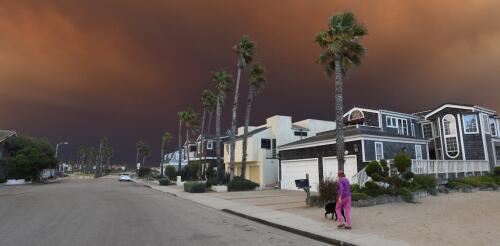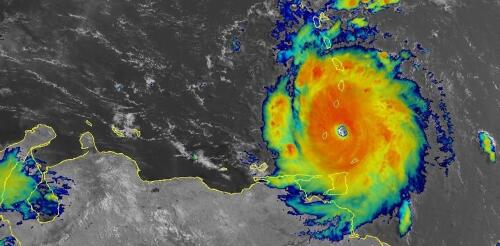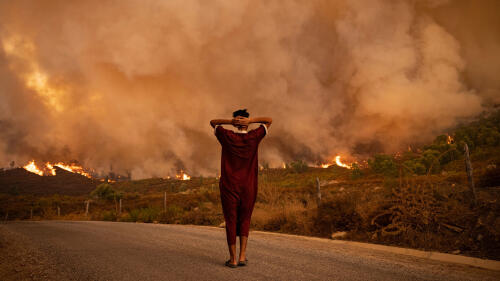Climate change
When wildfires rage, the immediate threat is obvious – but smoke from the fires actually kills far more people than the flames. As fires become more frequent, that smoke is leading to a public health crisis. In a new study published in the journal Science Advances, we found that wildfire smoke likely contributed to more than 52,000 premature deaths across California alone from 2008 to 2018, with an economic impact from the deaths of more than US$430 billion. Previous studies have examined the short-term health risks from wildfire smoke, but few have assessed how exposure to wildfire smoke over years adds up to shorten human lives. Smoke from far-off wildfires turns the skies orange over San Francisco in 2020. Running in wildfire smoke carries harmful particles deep into a person’s lungs. AP Photo/Tony Avelar Wildfire risk and severity have grown as the climate has changed and as more...
Hurricane Beryl was the latest Atlantic storm to rapidly intensify, growing quickly from a tropical storm into the strongest June hurricane on record in the Atlantic. It hit the Grenadine Islands with 150 mph winds and a destructive storm surge on July 1, 2024, then continued to intensify into the basin’s earliest Category 5 storm on record. Beryl was still a powerful Category 4 hurricane on July 3 when its eyewall brushed the coast of Jamaica and headed toward the Cayman Islands. A large part of Mexico’s Yucatan Peninsula was under a hurricane warning. The damage Beryl caused, particularly on Carriacou and Petite Martinique, was extensive, Grenada Prime Minister Dickon Mitchell told a news briefing. “In half an hour, Carriacou was flattened.” Beryl’s strength and rapid intensification were unusual for a storm so early in the season. This year, that is especially alarming as forecasters expect an exceptionally active Atlantic hurricane season....
Wherever people look, climate change is inflicting ever greater physical, economic, and mental costs on people and communities. From the impact of extreme weather events on food security to the growing spread of infectious diseases as weather patterns change, and with the rise of deadly heat waves, it is undeniable that what harms our planet also harms our health. To meet the Paris Climate Agreement targets of limiting global temperature rise to under 1.5°C (2.7°F), every sector—including health care—must undergo decarbonization in adapting to this new reality. Health care is one of many sectors fueling the climate crisis, emitting more global carbon dioxide (CO2) emissions than the shipping industry. In a new study, Unitaid sought to answer whether switching from one drug to another could provide lifesaving benefits while reducing carbon emissions. The findings reveal that this is not only possible, but also already...
The warming climate doesn’t only melt ice caps and bleach coral reefs but also puts your health at risk. Climate change is no longer a far-removed issue, able to be cast off as a problem “of tomorrow.” Climate change alters health both through long-term stressors, such as air pollution1 and vector-borne diseases2, and through acute events, such as heat waves3 and hurricanes.4 These long and short term elements collectively influence public health around the world. Climate change has health consequences from the scale of entire populations all the way down to the level of your cells.5 Here are six things that are sometimes forgotten regarding climate and health: Climate change is associated with infectious disease spread As temperatures rise, disease vectors like mosquitoes and ticks move northward into newly habitable terrain.2,6,7 This means that diseases that were previously only endemic to t...
Joe Biden’s withdrawal from the 2024 presidential race — bowing to weeks of pressure after a disastrous June debate and polls that showed worsening odds against his Republican rival, Donald Trump — upends the contest only weeks before Democrats meet in Chicago to confirm their nominee. Biden, 81, is the first sitting US president not to seek reelection for decades. He’s been a uniquely consequential leader on climate, most notably by signing the 2022 Inflation Reduction Act, the largest investment in reducing emissions and boosting clean energy in the nation’s history. Biden pledged that the US would halve its emissions by 2030. He rejoined the Paris Agreement after Trump pulled the US out of it and created the role of special presidential envoy for climate, among other actions. That presents a stark contrast to Trump, 78, who has called...




